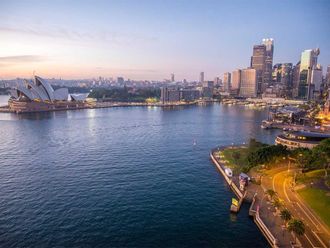Valparaiso, Chile: Chileans surveyed the smoking remains of homes charred in a fire in the historic port of Valparaiso, the city’s worst-ever blaze that killed 15 people, mainly in poor neighbourhoods.
Pockets of the massive blaze remained active days after it erupted on Saturday, with the inferno so far having consumed 2,500 homes and left 11,000 homeless, according to Interior Minister Rodrigo Penailillo.
Although the fire has eased in intensity, the pockets could flare up again, the minister said.
But the weather forecast for Tuesday is for cooler, less windy and more humid weather which should help firefighters, he said.
The cause of the fire remained under investigation.
The city, an architectural gem located about 80 miles (120 kilometres) from the capital Santiago, is famed for its Unesco-listed centre with cobblestone streets and brightly painted wooden homes.
The fire broke out in woodland and, whipped up by winds, spread quickly.
Some of those who refused to leave their homes died when the flames swept through.
Hardest hit have been Valparaiso’s poorer neighbourhoods, perched precariously on the coastal city’s tinder-dry hillsides, where dwellings built mostly of wood with tin roofs quickly became engulfed.
Health Minister Helia Molina declared a health alert starting on Tuesday, which speeds up access to medicine and other basics. She said this was just a precautionary measure, and not because of any epidemic of disease.
Thick smoke settled over the city and ash from the fire rained down on its historic port, which so far has been spared the wrath of the blaze.
President Michelle Bachelet has declared the ravaged area a disaster zone, allowing the armed forces to assist in relief efforts and take control of security.
Army troops and volunteers from around the country climbed the hills to help people who lost everything in the fire. Aid shipments poured in.
Supervised by firefighters, youths with shovels took to removing debris from the fire.
“Up there in the hills is where the poorest people always are. They were left without anything,” said Gabriela Gonzalez, a student in Valparaiso. “It is just wrong to stand by and do nothing.”
At least 13 helicopters, six planes and 2,000 police and soldiers, in addition to battalions of firefighters, battled the blaze.
Survivor Ericka Caceres said the first night she and her family spent in a shelter was rough for her family of seven, especially for her children, who had never been through an ordeal like this.
“We ended up with the clothes on our backs, in the street. We lost everything,” she told AFP.
Other Chileans rallied to donate diapers, powdered milk, clothes, water and other essentials. Fund-raising football games were held Monday.
Experts said it might take days to put the fire out completely, both in the main hot spots and on the periphery to keep it from starting up again.
Some residents — including a few who later died — had refused the order to evacuate for fear of losing their possessions to flames or looters, even though police and emergency crews guarded the streets.
“I will not let go of what little I have. This represents 15 years of effort, and until I can no longer see my house, I will not leave it. My wife and my four children are in a shelter,” said Arturo Gomez.
The blaze sparked the second mass evacuation in Valparaiso in as many weeks after the city was at the centre of a tsunami alert following a magnitude 8.2 earthquake on April 1.
Valparaiso’s golden era was from the mid-19th century to the early 20th as a stopover point for ships steaming down South America and to round its southern tip into the Atlantic Ocean.












